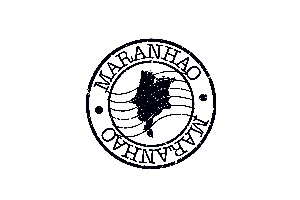Lesson 5:
São Luís: main attractions
Main attractions
Tile collection: European mosaics are visible on most of the building fronts in the historic centre of São Luís. The trend was implemented by Portuguese colonialists to beautify the buildings and protect them against wear caused by the rain, heat, and humidity common to the region. The mosaic collection is so integral to the city’s urban architecture that it earned the capital the affectionate nickname of "City of Mosaics".
The São Luís building has the largest number of colonial mosaics in the city. At the same time, the rarest hand-painted pieces can be found on the inside of churches, such as the Catedral da Sé, in the Museu de Artes Visuais (Museum of Visual Arts), in Rua Portugal, and on Praia Grande.
Praça do Comércio: As entry portal to the historic centre of São Luís, the square’s architectural beauty is an example of the Portuguese colonial style, with its facades decorated with mosaics and quarry stone.
Fonte das Pedras: Built into a walled quadrangle, the fountain again represents the best of Portuguese colonial styles, featuring a gable wall and beautifully functioning waterspouts.
Fonte do Ribeirão: This fountain was built in 1796 to supply water to the city; legend says that there is a charmed snake in the underground galleries, growing nonstop, which will one day destroy the island of São Luís.
Museu Casa Nhozinho: Built into an 1815 townhouse, this museum was named in honour of the great craftsman, Antonio Maranhão Bruno Nogueira. Its collection includes, among its many items, examples of Indian handicrafts and toys from the 18th and 19th centuries.
Museu Solar dos Vasconcelos: Built in the 19th century, this museum is one of the most significant examples of São Luís architecture. Its collection includes models and photographic panels displaying the history, preservation, and revitalisation of its historic centre.
Maranhão Historic and Artistic Museum: This charming 1836 mansion reproduces the atmosphere of a wealthy 19th century family home. A unique highlight for art lovers – the museum is home to Pablo Picasso’s piece, La Tauromaquia.
Sacred Art Museum: Set in a manor with a mosaic facade, this museum displays valuable pieces from the 18th and 19th centuries, which tell the church’s history in Maranhão.
Catarina Mina Alley: Made of a limestone staircase dating from the 18th century, the alley’s name honours the beautiful slave Catarina Rosa Pereira de Jesus, who worked to buy her freedom by providing "favours" to the Portuguese traders.
João do Vale Theatre: Also called Canarinho (canary) Theatre due to the colour of the building, it lends its stage to regional and national shows, as well as graduates from the Maranhão Performing Arts Centre (CACEM).
Domingos Vieira Filho Culture Centre: Better known as the Party House, this cultural centre displays the costumes and objects used in popular and religious festivals and rituals across Maranhão, including Candomblé, Umbanda, Tambor-de-Crioula, Festa do Divino, and Carnival.
Odylo Costa Filho Creativity Centre: The Cultural Complex consists of the Ferreira Gullar library, the Cine Praia Grande - a gallery for temporary exhibitions - and the Alcione Nazareth Theatre, which offers art courses, including photography, drawing and sculpture.
Maranhão Archaeology and Natural History Research Centre: Among the centre’s collection are fossils and replicas of prehistoric species found in Maranhão, objects from indigenous peoples that are thousands of years old, and other interesting relics of the past. A unique and unforgettable tour that should not be missed!
